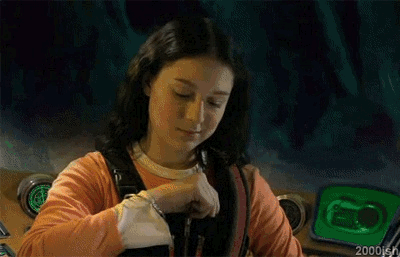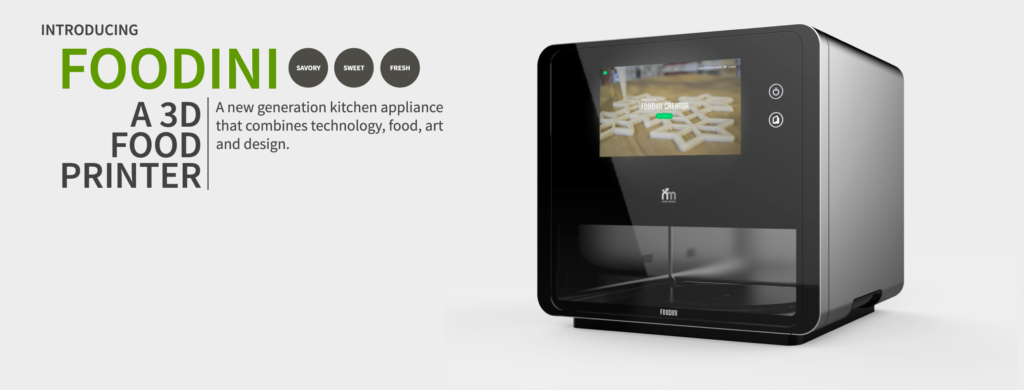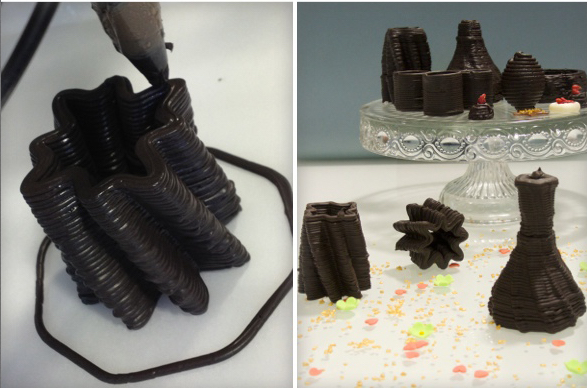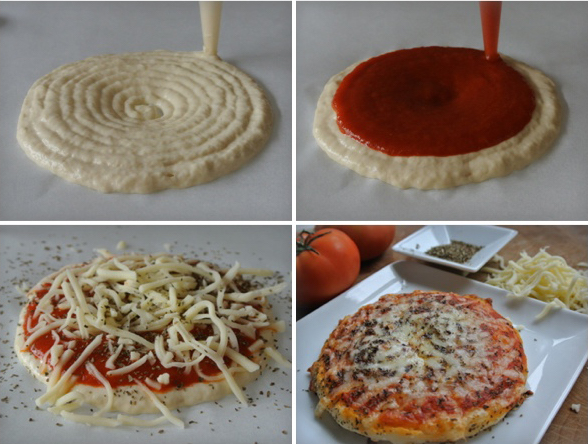We all wish food would come as easily as it does to Carmen and Juni in Spy Kids.

GIF courtesy of giphy.com
Thankfully, companies like our beloved Barilla have heard our prayers and have been using the newest technology in order to make the above a reality. Welcome to the world, 3D food printers. Barilla has been printing fresh pasta shapes that make penne and fettuccine look so last year. If you don’t believe me, check out the amazing pasta printing and get hungry.
NASA also seems to be jumping at this opportunity by beginning research on how to 3D print food in space. As much as we love tasting freeze-dried astronaut ice cream, astronauts probably like it a little less. A food printer could change the game by allowing them to eat fresh food, which will help them maintain a nutritional diet minus the hassle of transporting large amounts of food into space. One small step for man, and one giant leap for foodkind.
Even better, the company Natural Machines has created the Foodini, a food printer that you can buy for your own kitchen.

Photo courtesy of Natural Machines on Facebook
Although it may not make food magically appear in front of you without any effort, Foodini streamlines the process. It primarily focuses on paste-made food, such as chocolates and doughs, that can be placed into capsules and then printed. Foodini operates by printing several layers of food that can reach up to multiple centimeters high, similar to making a house out of popsicle sticks.

Photo courtesy of naturalmachines.com
Unfortunately, the ingredients have to be made first, meaning you need to prep the pizza dough and sauce before you can print the pizza. But this skips the step of manually rolling out dough and tossing it in the air only to have it land somewhere besides the counter. The pizza still needs to be cooked in the oven because the Foodini does not have an oven feature…yet.

Photo courtesy of naturalmachines.com
The Foodini is not yet a household appliance and is mostly used in professional kitchens where chefs can create unique and precise dishes. The food printer primarily helps chefs create dishes that can’t be done by hand, or would take too long, like printing 100 chocolate snowflakes for a dessert.
Maybe this will usher in an age of eating food that’s been primarily 3D printed. Kinda weird, but I also kinda dig it.


